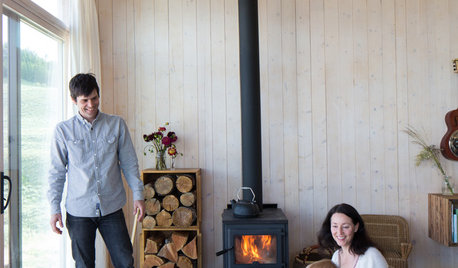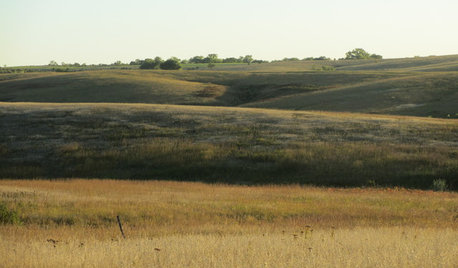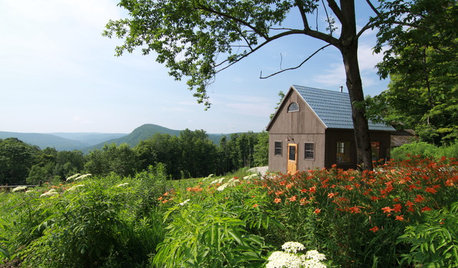tree suggestions near a septic field
ellenros
8 years ago
Featured Answer
Sort by:Oldest
Comments (39)
ken_adrian Adrian MI cold Z5
8 years agogardengal48 (PNW Z8/9)
8 years agolast modified: 8 years agoRelated Discussions
Water-Loving Tree Between a Driveway and a Septic Leach Field
Comments (7)welcome!!! two new acres .. and you are fixated on this BAD SPOT ... i had the same problem when i moved to acreage ... enjoy this summer working on the other 1.98 acres ... you just moved in.. how about .. not unlike a scientific experiment.. you spend the next year or two.. studying this spot.. and its YEAR ROUND water patterns ... and THEN think about planting something there.. you just moved in.. how have you come to conclusions at this point???? .. heck i am in adrian MI. and in a normal spring.. the ground would have thawed barely last week ... and it is not uncommon to have standing water at such time ... if water does actually remain a year round issue.. how about you fill in the hole.. regrade.. or whatever.. and then think about planting there... and i am pretty sure.. no tree .. will fix a drainage or water issue ... come on wench.. you're a lab rat.. think analytically ... my total GUESS... its a transitory spring issue.. and most likely.. you are not limited as to plant choice.. depending on your native soil structure ... i would start .. by digging a hole .. and finding out if you are dealing with clay .... and then do a perk test.. as to drainage in your garden ... then the yearly water pattern ... and then a plant ... i hope that is gentle enough.. i got wound up on your lab-ness ... and analogizing to that ... good luck ... ken...See MoreTrees that are ok to plant near septic systems?
Comments (4)http://pubs.ext.vt.edu/426/426-617/426-617.pdf everyone will say "no" I have Malus and Oxydendrum Arboreum a few feet away from the farthest edge of my system. The link may be worth a read on this topic. Planting on or near the drain field can result in serious expense later. Here is a link that might be useful: Planting on Your Septic Drain Field...See MoreArborvitae trees near a septic leach field
Comments (1)Hi. Most would just say "no" since any serious root invasion could make for a very costly repair and/or costly sale of the home once an inspector for the buyer raises hell about the trees near the drain field. That being said, the best information I was able to find about the topic is here: pubs.ext.vt.edu/426/426-617/426-617.pdf FWIW, I have malus and Oxydendrum arboreum within about 5 feet of the edge of mine. My folks have several eastern white pines all in theirs (30-something years on, no problems). Unless you get advice from an expert on the tree you are planting that says go ahead, don't do ahead with the plans unless you're willing to pay for a fix later down the road. I hear it's expensive :-)...See MoreTree options for septic field - SC
Comments (18)I just moved into a new home and we have a septic system and drain field. I checked out the Virgina COOP Extension and they have good advice. But, my drain field is on my front lawn - and I know exactly where it is because when they seeded and mulched my front lawn, you can see where the drain field is because it was dryer and the seed didn't sprout as fast as other places. Our soil here is good but filled with small rocks. It has a lot of clay, but not as much as my old home. So far I'm planting shrubs and perennials near the house - which is over the pipe going out to the septic tank. I've also planted a Bald Cypress about 50 feet up hill from the septic tank cover and a Dawn Redwood about 70 feet up hill from the septic tank cover. I feel they are both far enough away from the drain field. I'm also planting some smaller varieties of maples at the end of my lot - and that's about 50 - 60 feet from the end of the drain field. From what I've read I should have no problems. The main drain field will only have grass over it - that's all. But if I have a problem with the grass there, I think I'll put in a bed of Daylilies or something that will cover and add beauty to the area. Good luck with your Chestnut tree - they are beautiful trees and I hate seeing it cut down, but if it's screwing up your septic system, you have to do it. Ken...See Moreakamainegrower
8 years agoellenros
8 years agoToronado3800 Zone 6 St Louis
8 years agolucky_p
8 years agopoaky1
8 years agolast modified: 8 years agopoaky1
8 years agoakamainegrower
8 years agokrnuttle
8 years agopoaky1
8 years agolast modified: 8 years agokrnuttle
8 years agopoaky1
8 years agokrnuttle
8 years agolast modified: 8 years agogardengal48 (PNW Z8/9)
8 years agoToronado3800 Zone 6 St Louis
8 years agopoaky1
8 years agopoaky1
8 years agoalabamatreehugger 8b SW Alabama
8 years agopoaky1
8 years agopoaky1
8 years agolast modified: 8 years agopoaky1
8 years agopoaky1
8 years agoalabamatreehugger 8b SW Alabama
8 years agopoaky1
8 years agoalabamatreehugger 8b SW Alabama
8 years agoalabamatreehugger 8b SW Alabama
8 years agoakamainegrower
8 years agoJohniferous (Zone 6B, Northern NJ)
8 years agolast modified: 8 years agopoaky1
8 years agoVera Cornwell
8 years agolast modified: 8 years agoMike McGarvey
8 years agoUser
8 years agoviper114
8 years agopoaky1
8 years agotreebird101
8 years agopoaky1
8 years agopoaky1
8 years ago
Related Stories

HOUZZ TOURSHouzz Tour: Family Builds Off the Grid Near the Cascade Mountains
Homeowners carefully construct a weekend home on 20 acres in remote northeast Washington
Full Story
GARDENING GUIDES5 Best-Behaved Trees to Grace a Patio
Big enough for shade but small enough for easy care, these amiable trees mind their manners in a modest outdoor space
Full Story
FALL GARDENING11 Trees for Brilliant Fall Color
Give your landscape the quintessential look of autumn with the red, orange and yellow leaves of these standouts
Full Story
LANDSCAPE DESIGNPretty Trees for Patios, Paths and Other Tight Spots
Choose trees for their size, shape and rate of growth — or shape them to fit your space. Here's how to get started
Full Story
CHRISTMASReal vs. Fake: How to Choose the Right Christmas Tree
Pitting flexibility and ease against cost and the environment can leave anyone flummoxed. This Christmas tree breakdown can help
Full Story
HOLIDAYSHow to Care for Your Christmas Tree
Keep your tree looking lush until the last ornament is packed away with these tips for watering, using stands and more
Full Story
LANDSCAPE DESIGNThe Unparalleled Power of Trees
Discover the beauty and magic of trees, and why a landscape without them just isn't the same
Full Story
GARDENING GUIDESHow to Get Your Prairie On
Have a field day with your landscape, even if you've got just a few modern containers on a paved path
Full Story
MOST POPULAR11 Ways to Refill Your Creative Well
Stuck for new ideas and inspiration? These suggestions will get the wheels turning again
Full Story
CABINSRoom of the Day: Timber-Frame Cabin Inspires Couple’s Creative Pursuits
This work studio, built in a simple vernacular architectural style, sits near a couple's rural home in the Berkshire mountains
Full Story





akamainegrower